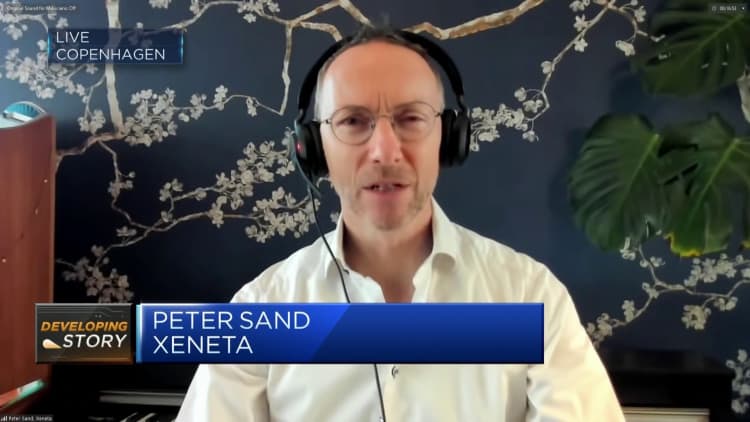LONDON — U.K. inflation unexpectedly nudged upwards to 4% year-on-year in December, fueled by a rise in alcohol and tobacco prices.
This was the first month in which the annual consumer price index has risen since February 2023.
Economists polled by Reuters had expected a modest decline in the annual headline CPI to 3.8%, after November's sharper-than-expected fall to 3.9%.
Month-on-month, the headline CPI rose by 0.4%, above a consensus forecast of 0.2% and up from -0.2% in November.
"The largest upward contribution to the monthly change in both CPIH and CPI annual rates came from alcohol and tobacco while the largest downward contribution came from food and non-alcoholic beverages," the Office for National Statistics said.
The closely watched core CPI figure — which excludes volatile food, energy, alcohol and tobacco prices — came in at an annual 5.1%, above a 4.9% Reuters forecast and unchanged from November.
The largest upward contribution to the core figure came from travel and transport services, the ONS said.
Inflation still on track for 2%
"As we have seen in the U.S., France and Germany, inflation does not fall in a straight line, but our plan is working and we should stick to it," British Finance Minister Jeremy Hunt said in a statement.
"We took difficult decisions to control borrowing and are now turning a corner, so we need to stay the course we have set out, including boosting growth with more competitive tax levels."
U.S. inflation also rose in December to an annual 3.4% from 3.1% in November, while euro zone CPI jumped to 2.9% from 2.4% in the previous month.
The Bank of England will hold its next monetary policy meeting on Feb. 1, after hiking interest rates rapidly over the past two years in a bid to tame runaway inflation.
"This unexpected rise in inflation is a timely reminder that the struggle against soaring inflation is not yet over, particularly given stubbornly high core and services inflation," said Suren Thiru, economics director at ICAEW.
"While inflation may rise again in January, following the increase in Ofgem's energy price cap, it should fall at a decent pace thereafter, aided by the expected drop in energy bills from April and lower food inflation."

Although ongoing tensions in the Red Sea could make core inflation more sticky, Thiru suggested the rate should pull back throughout the year as slower wage growth and a stagnating economy begin to suppress demand.
This was echoed by PwC Economist Jake Finney, who said headline inflation is still on track to return to the Bank of England's 2% target as early as April.
"It is likely that the Bank of England will respond to easing inflation pressures by materially lowering their projections in the upcoming February Monetary Policy Report," he added.
"This should pave the way for rate cuts later this year, potentially as early as May if the labour market continues to cool."
A fresh round of jobs data on Monday also highlighted the tricky path ahead for the British central bank, as it decides when, and how sharply, to cut interest rates in 2024. Markets are currently pricing more than 100 basis points of cuts to the benchmark rate across the year.
The number of vacancies posted declined by 49,000 over the final quarter of the year, while the unemployment rate remained largely flat at 4.2%.
Pay growth, a key data point for the Bank, slowed significantly in the three months to the end of November. As inflation is falling faster than that rate, average pay is still growing in real terms.

